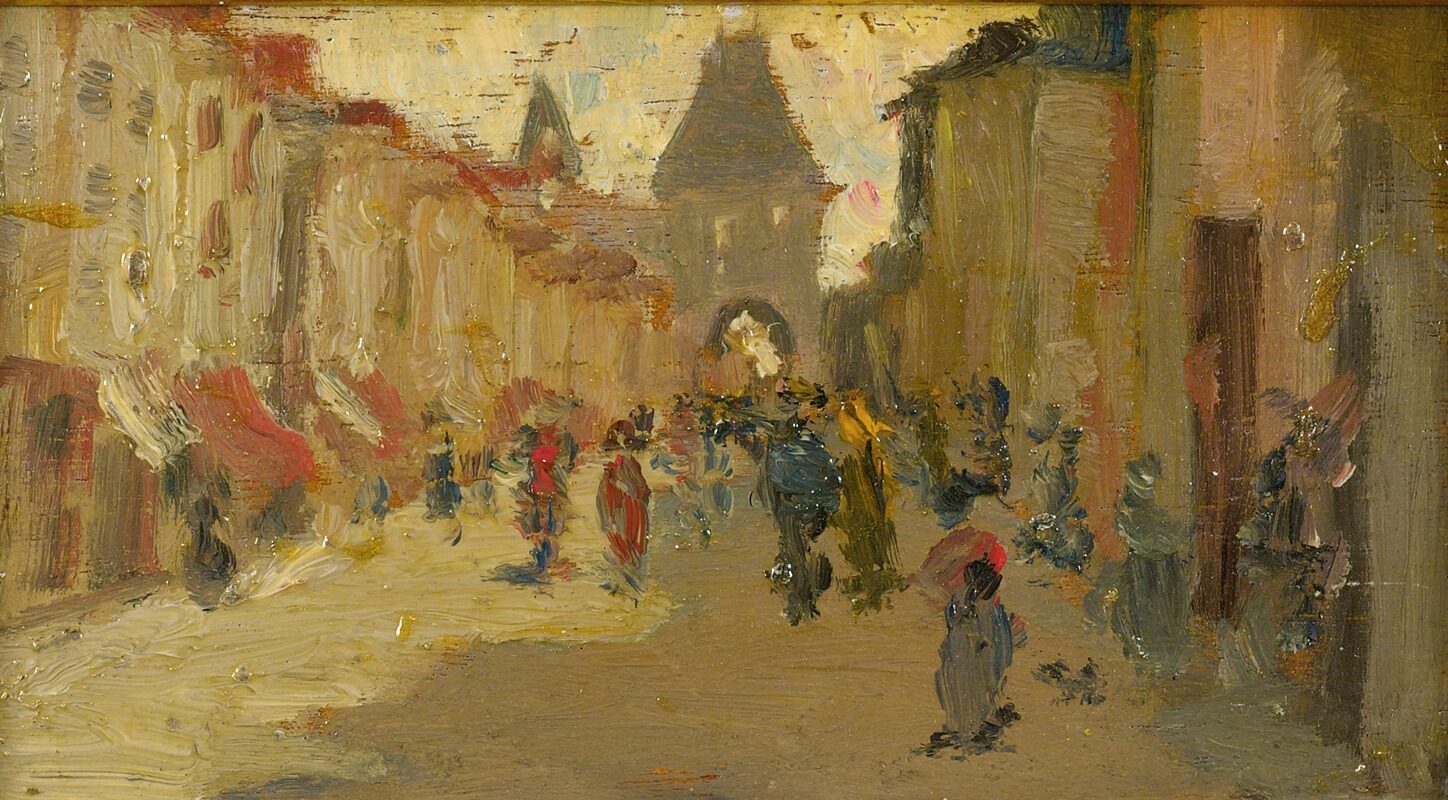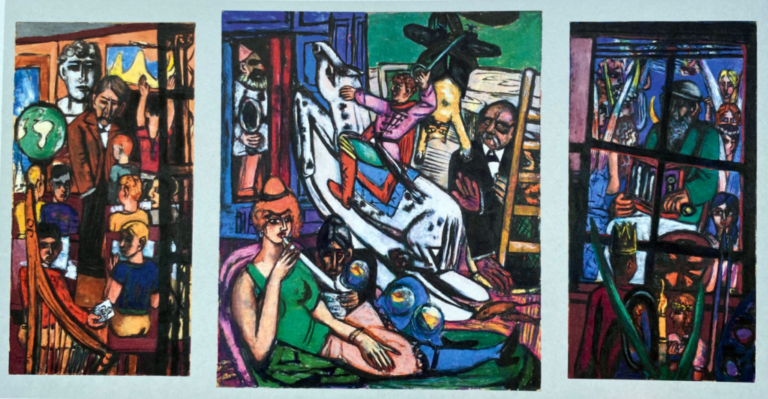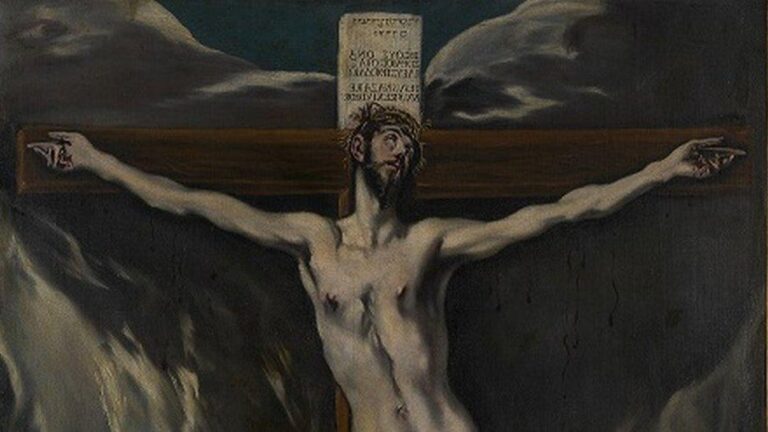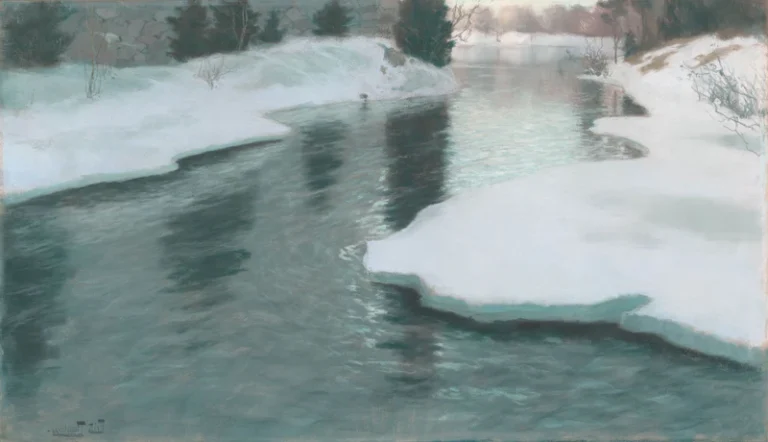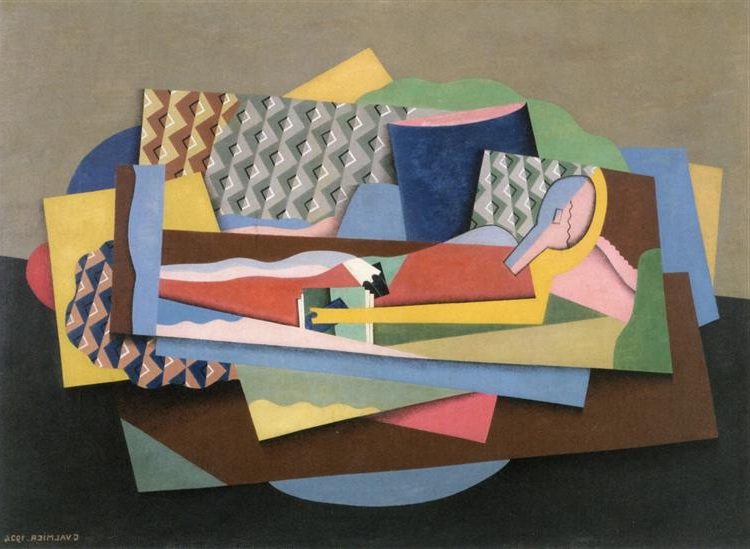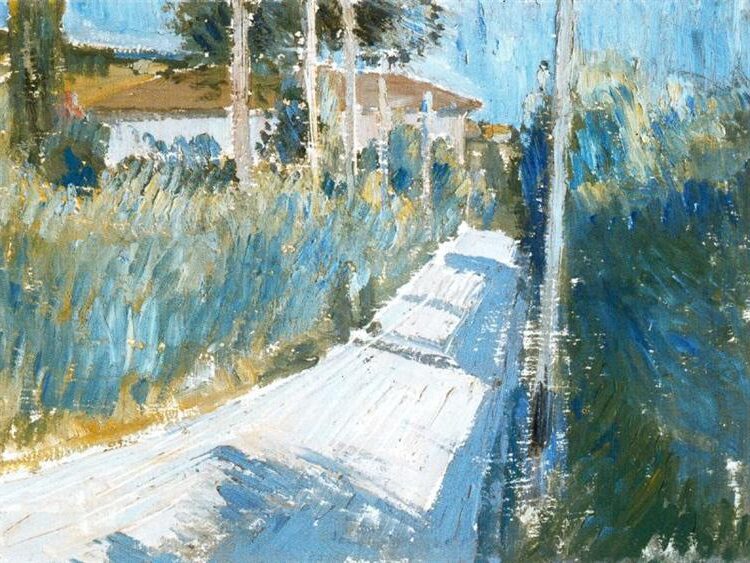Robert Henri: Pioneering American Painter of the Ashcan School Movement
Born: June 24, 1865, Cincinnati, Ohio, US
Death: July 12, 1929, New York City, US
Art Movement: Ashcan School
Nationality: American
Teachers: Thomas Anshutz, Thomas Hovenden, William-Adolphe Bouguereau, and Robert Vonnoh
Institution: Pennsylvania Academy of the Fine Arts, Académie Julian, École des Beaux Arts
Robert Henri: Pioneering American Painter of the Ashcan School Movement
Life and Career of Robert Henri
Robert Henri (1865-1929) emerged as one of America’s most influential painters and art teachers. His realistic approach to capturing everyday life and his progressive teaching methods shaped American art in the early 20th century.
Early Years and Education
Born Robert Henry Cozad on June 24, 1865, Henri spent his early years in Cincinnati before his family relocated to Cozad, Nebraska. After a family scandal forced them to change their name, the family moved east.
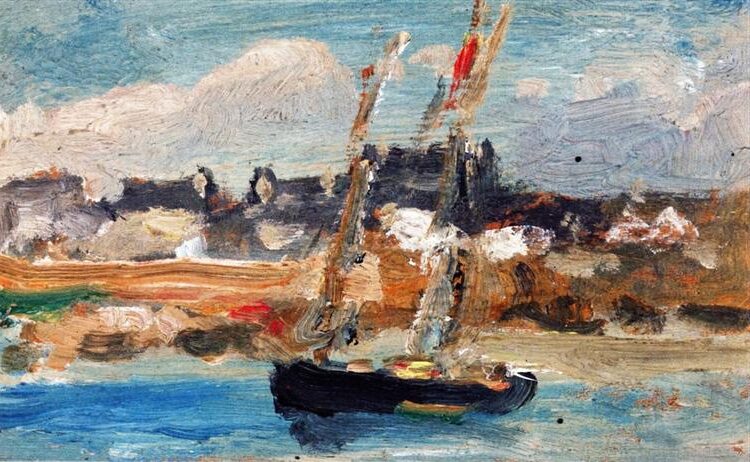
Two Masted Schooner, Concarneau, 1899, by Robert Henri
Henri pursued formal art training at the Pennsylvania Academy of Fine Arts, where he studied under Thomas Anshutz. Anshutz had been taught by Thomas Eakins. This foundation influenced Henri’s commitment to realistic portrayal.
He continued his education in Europe, studying at prestigious institutions like the Académie Julian and École des Beaux-Arts in Paris. These experiences exposed him to both traditional academic methods and newer artistic movements.
Formation of The Eight and the Ashcan School
Upon returning to America, Henri settled in New York City where he developed his distinctive style focusing on urban realism. He rejected the conservative artistic establishment represented by the National Academy of Design.
In 1908, Henri organized an independent exhibition featuring eight artists (later known as “The Eight”) who shared his interest in portraying genuine American life. This group formed the core of what critics called the “Ashcan School.”
The Ashcan School painters depicted ordinary people and gritty urban scenes with honesty and directness. Henri encouraged his colleagues to capture the vitality of contemporary life rather than creating idealized imagery favored by the academy.
Teaching Philosophy and Influence
Henri became an extraordinary teacher, first at the School of Design for Women, then at the New York School of Art and later at the Art Students League. His approach emphasized personal expression over technical perfection.

Gertrude Vanderbilt Whitney, 1916, by Robert Henri
His teaching methods were revolutionary. Rather than imposing rigid techniques, Henri encouraged students to develop their unique artistic voices and to paint with emotional intensity.
His influential book “The Art Spirit” (1923) collected his teachings and philosophy. The text continues to inspire artists today with its emphasis on authentic self-expression and the spiritual dimensions of art-making.
Henri’s legacy extends through generations of American artists who benefited from his mentorship, including Edward Hopper, George Bellows, and Rockwell Kent. His impact on American art education remains profound nearly a century after his death.
Artistic Style and Contributions
Robert Henri developed a distinctive artistic approach that challenged conventional academic traditions. His work emphasized honest representation and emotional depth, making him a pivotal figure in early 20th century American art.
American Realism and Personal Expression
Henri rejected the soft, pretty aesthetics of Impressionism, calling it a “new academism” by 1895. He adopted a darker color palette and a more direct painting style that captured the raw energy of urban life.
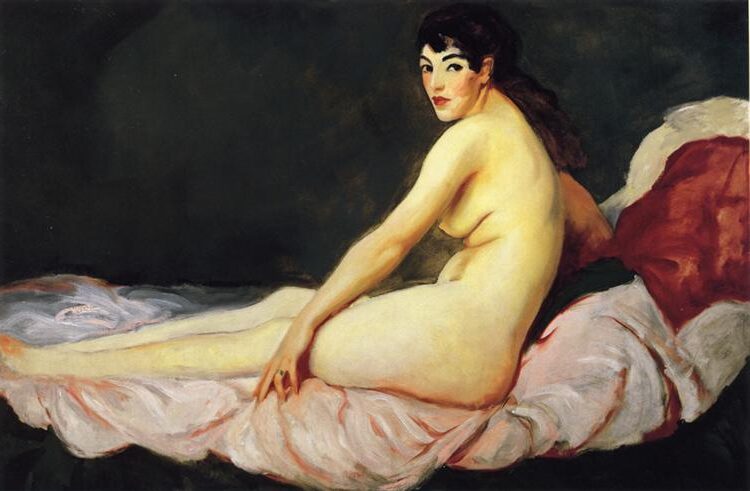
Viv Reclining (Nude), 1916, by Robert Henri
As a pioneer of the Ashcan School of American realism, Henri portrayed city scenes with unflinching honesty. His work featured everyday people and places often overlooked by traditional artists of his time.
Henri believed art should connect deeply with contemporary humanity. He encouraged artists to paint with feeling and authenticity rather than technical perfection.
His influence extended beyond his own paintings. Through teaching and writing, Henri promoted the idea that art should express personal vision rather than follow academic rules.
Portrait Work and Exhibitions
Henri’s reputation rests significantly on his portrait paintings. He approached “ordinary” sitters with remarkable candor, painting them with dignity regardless of social status.
His portraits often featured immigrants, urban poor, and marginalized groups. Unlike academic portraitists who flattered wealthy clients, Henri revealed the humanity and character of everyday people.
Henri exhibited widely at prestigious venues including the National Academy of Design and Art Institute of Chicago. However, he also organized independent exhibitions like the groundbreaking 1913 Armory Show.
He created the “Exhibition of Independent Artists” in New York, giving space to artists rejected by conservative galleries. This democratic approach to exhibition helped reshape the American art world.
Later in life, Henri painted in Santa Fe, New Mexico, where he created vibrant portraits of local people that demonstrated his continued commitment to honest representation and cultural respect.
Legacy and Museums
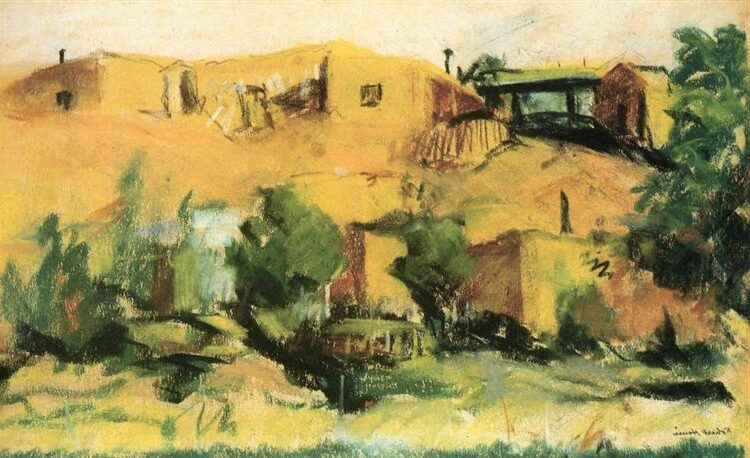
Indian Village, 1917, by Robert Henri
Robert Henri’s impact on American art extends beyond his paintings into the institutions that preserve his work and teachings. His artistic vision continues to influence generations of artists through museum collections and dedicated spaces honoring his contributions.
Institutional Recognition and Collections
The National Gallery of Art houses significant works by Robert Henri, recognizing his importance in American art history. His paintings have been featured in prestigious institutions across the United States and internationally, including the Musée National du Luxembourg in Paris.
Notable works like “Snow in New York” demonstrate Henri’s mastery of urban landscapes and his ability to capture the essence of American life. These paintings remain valued centerpieces in museum collections today.
Henri’s work appears alongside other members of The Eight and artists he influenced. This placement shows his role in the development of American Realism and early modernism.
Robert Henri Museum and Legacy
The Robert Henri Museum and Art Gallery in Cozad, Nebraska preserves the artist’s childhood home and celebrates his artistic contributions. This museum offers visitors insight into Henri’s early life as Robert Henry Cozad before he changed his name.
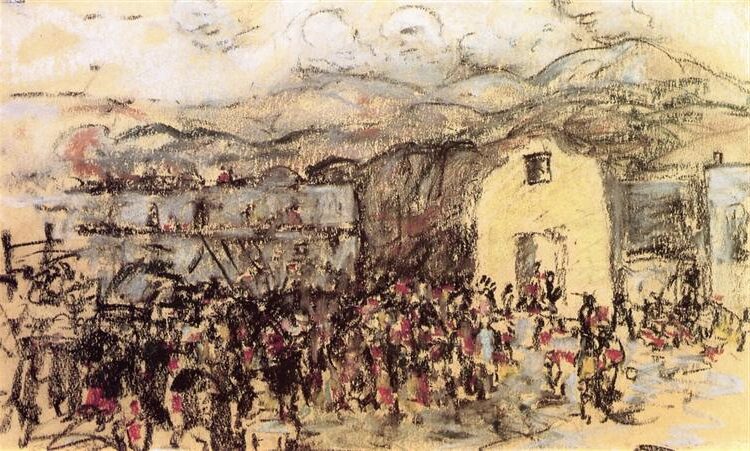
Tesuque Pueblo, 1917, by Robert Henri
Henri’s legacy extends through the artists he taught and inspired, including George Bellows, Edward Hopper, and Rockwell Kent. These painters carried forward Henri’s emphasis on authenticity and connecting art with everyday life.
His influential book “The Art Spirit” continues to guide artists today. The text compiles Henri’s teachings and philosophy about art making, emphasizing artistic freedom and personal expression over academic formality.
The museum hosts exhibitions that highlight Henri’s techniques and his impact on American painting in the early 20th century.
Frequently Asked Questions
Robert Henri’s impact on American art extends beyond his paintings to his teaching philosophy and role in art movements. These questions explore his most significant works, artistic influence, painting style, portrait themes, connection to the Ashcan School, and formative experiences.
What are the most celebrated works of Robert Henri?
Henri’s portrait of Gertrude Vanderbilt Whitney stands as one of his most significant paintings. This work, created between 1913-1916, captures the founder of the Whitney Museum of Art.
“Snow in New York” and “The Art Spirit” are also among his highly regarded contributions. His portraits of children, particularly those from his time in Ireland and Spain, showcase his ability to capture genuine emotion and character.
How has Robert Henri influenced American art?
Henri revolutionized American art education through his teaching at the Art Students League in New York. He encouraged students to paint with freedom and authenticity rather than adhering to rigid academic traditions.
His rebellion against the Academy’s formal approach inspired generations of artists to seek their own voice. Henri’s philosophy that art should reflect life as it is, not idealized versions, fundamentally changed the direction of American painting in the early 20th century.
What are the distinguishing characteristics of Robert Henri’s painting style?
Henri’s style features bold brushwork and a rich, dark color palette that creates dramatic effects. He often painted quickly to capture the spontaneous essence of his subjects.
His approach emphasized emotional truth over technical perfection. Henri’s work shows influences from both his teacher Thomas Eakins and European masters, but with a distinctly American sensibility focused on everyday life and authentic human expression.
Can you provide insight into the themes of Robert Henri’s portraits?
Henri’s portraits reveal his interest in capturing the genuine character and spirit of ordinary people. He often chose subjects from diverse backgrounds and working-class neighborhoods.
His work shows a deep respect for human dignity regardless of social status. Henri believed portraits should reveal inner truth rather than mere appearance, stating that a portrait should be “a picture of a person, not just of a body.”
What role did Robert Henri play in the Ashcan School?
Henri was the leading figure and spiritual father of the Ashcan School, a movement focused on depicting the gritty realities of urban life. He encouraged artists to leave their studios and paint the city streets and common people.
Under his guidance, the group rejected academic traditions in favor of honest depictions of everyday American life. Henri’s influence helped establish the Ashcan School as one of the most important art movements in American history.
How did Robert Henri’s early life impact his artistic development?
Born Robert Henry Cozad in Cincinnati in 1865, Henri’s father was a gambler and real estate developer. This unconventional background likely influenced his later rejection of established norms.
After studying with Thomas Eakins, Henri developed a philosophy that valued authenticity above technical precision. His travels throughout Europe exposed him to various artistic traditions. He then synthesized these traditions into his distinctive American style that valued honesty and emotional depth.

